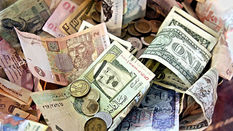|
HOME
Number Algebra and Graphs Algebraic Manipulation and Representation Introducing Algebraic language Simplifying Expanding Factorising Substitution Changing the Subject Combining and Simplifying Algebraic Fractions Algebraic Indices 3 Laws of Indices Zero Index Negative Indices Fractional Indices Exponential Functions Equations and Inequalities Linear Equations Constructing Equations Simultaneous Equations Inequalities Quadratic Equations Linear Programming Graphing Inequalities Linear Programming Sequences nth Term Rule Variation Direct Variation Inverse Variation Graphs in Practical Situations Conversion Graphs Difference Distance and Speed -Time graphs Distance-Time Graphs Speed-Time Graphs Acceleration and Deceleration Area under Speed-Time Graph Graphs of Functions Parabolas Graphical Solution of Quadratic Functions Reciprocal Functions Linear Functions Exponential Functions Gradient of a Curve Graphical Solution of Equations Graphing Inequalities Functions Evaluating Functions Inverse of Functions Composite Functions Geometry Mensuration Coordinate Geometry Trigonometry Vectors/Matrices/ Transformations Probability Statistics |
How to work with and construct Conversion Graphs

In this section I will explain to you all you need to know about what Conversion Graphs are to pass your IGCSE GCSE Maths exam. When you study the following videos during your maths revision you will understand that we for instance use conversion graphs to see how much an amount of money is worth in a different currency. But there are more examples of when conversion graphs are used. The amount you have to pay a taxi driver for instance for a particular amount of km sitting next to him. We use conversion graphs to understand the value of one variable when we know the value of the other value. Not sure what I am talking about? Don't worry! Check the videos and you will also understand what Conversion Graphs are!!
|



